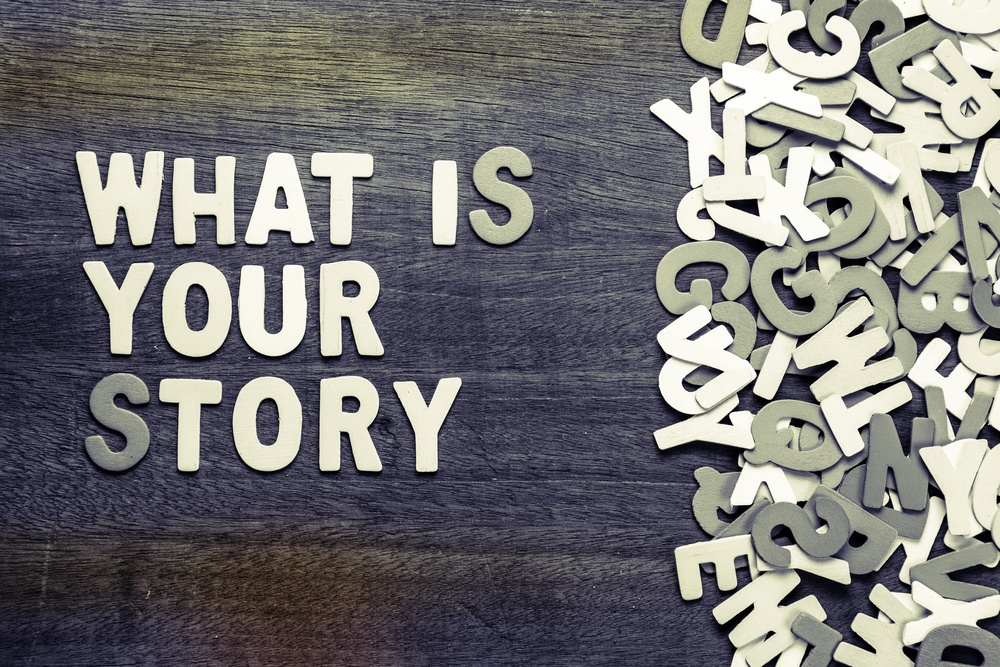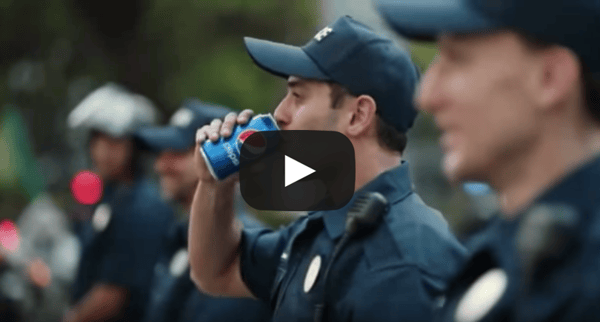
It is not a secret to anyone that storytelling is a key tool for both brands and advertisers to connect with their consumers and, therefore, increase their sales. "Stories do not only move people, they also move products", said Ilya Vedrashko, SVP and Research Director at Origin, Hill Holliday's consumer research arm.
But the effectiveness of the stories isn't learned in the communication or marketing classes, but in the sciences: oxytocin, a hormone generated in the hypothalamus, is released when we feel empathetic towards the characters of a story.
We are a social species, which depends on the community to survive. Therefore, our "reptilian brain" reacts with oxytocin and acts instinctively by identifying a positive or negative feeling by alerting us to the events that occur during the story.
If we see it from a scientific point of view, a good story generates oxytocin in those who read or experience it.
But let's put science aside for a moment and let's take a look to the pillars and tasks to make a good story:
4 pillars that every good story should have
- Empathy
Every good story must have things that are familiar to us. Our brain tends to reject what is too weird, this is why it's difficult for us to feel comfortable with a story that is to external to us.
We are fascinated by stories that closer to us, even in an intellectual level: why do some science fiction stories succeed? Because no matter how crazy they are, if they include something that we can relate to, they will be successful. Think of the familiar plot of Star Wars or the situations in Black Mirror.
The more empathic a plot, the more likely we are to get hooked on it. Another example: Buzzfeed. This site loves to create 100% empathetic stories, but it does not always go to the general (although it could work, "10 things you fell familiar with if you have a Mexican mom"), but, in general, it goes to specific subjects, looking to become viral not so much because you have lived it, but because you know someone who actually has (for example "10 signs that you went to a religious college").
- Newness
Empathy is nothing if it is always the same or if it always speaks about boring contexts. That's why newness is so important, our brain lights up when we see something new, and we pay attention easily because we are curious by nature.
This is related to our own instinct because when our species lived in caverns, they didn't know if each new thing was a potential threat, that's why the newness forced them to be 100% alert, a behavior that we have inherited.
But careful: if something is too "new" for us, it becomes too confusing for our brain. You shouldn't forget the point 1 since it isn't about frightening people or disinteresting them.
- Tension/Stress
Remember what we said above. The characters or situations in your story should show a certain distance between what is and what they want. The key in your plot is to create something that closes that distance but suddenly tell something that opens it again, maybe even more than it was in the beginning. Do this many times. This "push and pull" will keep your audience attentive and keep you alert all the time.
- Fluency
Do not distract people with showy words or too technical to presume that you know what you are talking about or that you are better than your competition. The most successful writers speak to people with a colloquial language that we can all understand. If you use this approach, you will avoid distractions, confusion, and noise in communication, aspects that cause your story to lose its fluidity.
6 tasks to tell a significant story
Now that you have clear the 4 pillars to have a good story, it is time to analyze these 6 tasks that you must use to build it.
Create emotions.
The most powerful weapon you have when talking about storytelling is to customize everything. Use personal stories in your messages to amplify them. If your ideas are connected to those of your audience, you will have more opportunities to create emotional connections. Remember that people are always making decisions based on their feelings.
Grow your appearance.
Use integrated visual tools that maximize your plot: videos, photos, animations. Catch people attention with great formats.
Make it easy to share.
Use platforms that allow your stories to be easily shared. Social networks are the format by excellence to achieve it. Not all of it has to work in the same way. You can also create an inspirational call to action.
Do everything with quality.
You can help your story with photos, videos, influencers, social networks, etc. If it isn't catchy, or has substance and quality, your efforts will do nothing. If it is consistent, timely and relevant, it will have more impact and will gain strength over time, because it will probably go viral. Do not spam your audience with nonsense or junk content..
Be real and authentic.
Remember that we are in 2018 and people are not as "innocent" as before. Hypocrisy and falsehood are detected kilometers away. Use stories of people who have really used your product or service, be genuine, do not lie to your audience. When a brand history is honest, it is credible and, therefore, it is easier to feel closer to it.
The 5 prototypical elements of the stories
Don't forget the fact that prototypical stories (from antiquity) are constructed from these elements:
- A hero, which in this case would be the client or consumer, this means, the one who lives the adventure (remember: your brand is NOT the hero, we will see this later).
- A villain, what the client needs to solve.
- A fairy godmother, which in this case is your brand or product.
- Plot, with approach, climax, and outcome. Time and place.
How to use storytelling to sell your brand?
The introduction to storydoing
So far we have talked about telling a story to position a product or service, but how can we use storytelling to sell a whole brand and increase profits? Achieving empathy with a product is a challenge, but achieving empathy with a whole brand is another very different challenge, and is even more important.
Remember that great stories not only create thoughts but also actions. For example, ancient Greek stories invited people to go against antisocial behaviors and ideas and encouraged actions that unified the inhabitants.
In this way, you can use the stories to explain who you are as a brand and what your values are, invite people to change or give importance to a certain thought. Plots are useful to turn complicated ideas into familiar thoughts and create a sense of movement towards a higher state of being, towards a laudable goal.
These are the bases of the so-called storydoing, a concept that, according to Rosemarie Ryan, CEO and co-founder of co:collective, is defined as the act of living your story as a brand, different to just telling it (storytelling).
The storydoing is based on the fact that the number of channels for which a brand can transmit their stories is very big, so it is more difficult to stand out from others.
Therefore, it is important that companies not only tell stories about their products, but also tell stories about themselves in each action they undertake, and for this it is necessary to create a habit of telling stories in each area of the organization, not only in marketing. The goal is to create experiences in which people can participate and share with others. Remember that actions speak more than words.
Storydoers put their story at the center of their business and reflect it in their products and services. They show a greater ambition and goes beyond the commercial and they pursue that ambition in everything they do, in a way that inspires people to join and spread it.
Putting into practice the storydoing will make your brand more efficient and effective, but also more satisfactory for both your customers and your staff.
A successful case study
Watch the following video and lets analyze it together:
In this short film, Cornetto clearly is following all the characteristics that we said before.
Regarding the plot, it has empathy (who has not suffered because their crush doesn't pay attention to oneself?), newness (the girl's voice is an example), tension (why the hell their crush doesn't pay attention to them? perhaps their crush is rude? She begins to despair...) and fluency (expressed through editing, not so much through the dialogues, because in fact it practically lacks of them).
Likewise, it has the 6 most important points to tell a transcendental story and with the prototypical elements (the heroine, the villain and even the fairy godmother, which in this case is a "godfather").
Some don’ts about storytelling
PEPSI CASE
Do you remember this horrible commercial? Why do you think it has failed?
There are several reasons why this commercial was so criticized, but here we are going to focus on the storytelling.
Remember: when it's about storytelling, your brand is not the hero. Storytelling is not really about you, but about how you can help your clients achieve their goals based on your brand values. You are not the hero, you are more like an "advisor" to your audience and your function is to "push" to make it better, to dare to fulfill their dreams, to overcome their fears, etc.
When you tell a story to your audience, you are really telling your story, but not in an obvious way (review the concept of storydoing again).
SAMSUNG CASE
Now let's see what Samsung thought was a good idea:
It is clear that Samsung wanted to introduce us to three different characters with three different conflicts, three climaxes, and three conclusions. The storytelling was well applied, but did you believe these characters? (Without the sexist panorama of putting the woman as the only character who did not even know what an SSD was).
The reactions and dialogues of these characters are not credible at all and they do not manage to have any connection with the audience. Everything looks so fake and it ends up not being authentic (remember what we said you about the 4 pillars of any good story).
Do you think any of these actors buy a Samsung product in real life? Think about this reflection...



